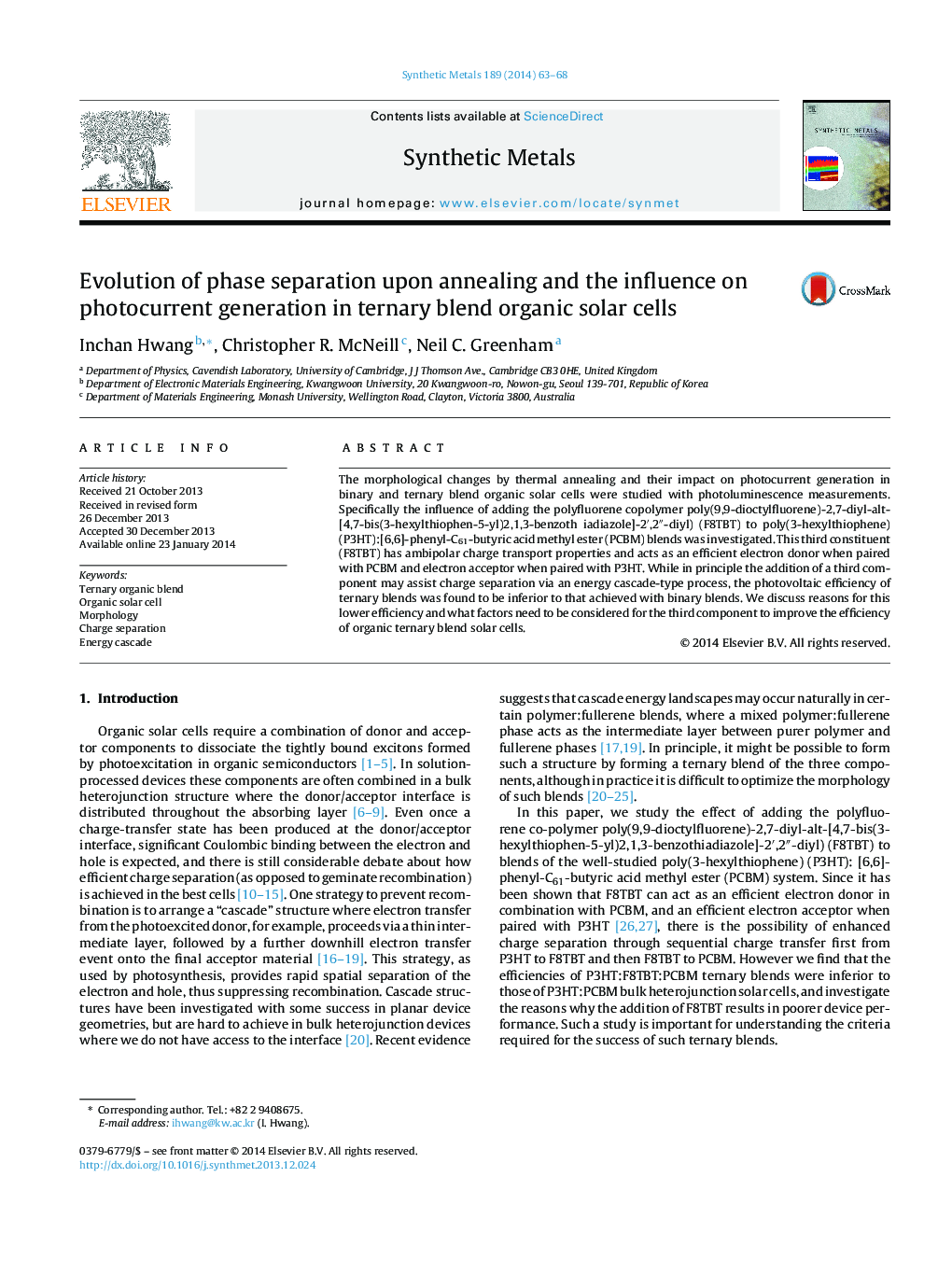| Article ID | Journal | Published Year | Pages | File Type |
|---|---|---|---|---|
| 1441040 | Synthetic Metals | 2014 | 6 Pages |
Abstract
The morphological changes by thermal annealing and their impact on photocurrent generation in binary and ternary blend organic solar cells were studied with photoluminescence measurements. Specifically the influence of adding the polyfluorene copolymer poly(9,9-dioctylfluorene)-2,7-diyl-alt-[4,7-bis(3-hexylthiophen-5-yl)2,1,3-benzoth iadiazole]-2â²,2â³-diyl) (F8TBT) to poly(3-hexylthiophene) (P3HT):[6,6]-phenyl-C61-butyric acid methyl ester (PCBM) blends was investigated. This third constituent (F8TBT) has ambipolar charge transport properties and acts as an efficient electron donor when paired with PCBM and electron acceptor when paired with P3HT. While in principle the addition of a third component may assist charge separation via an energy cascade-type process, the photovoltaic efficiency of ternary blends was found to be inferior to that achieved with binary blends. We discuss reasons for this lower efficiency and what factors need to be considered for the third component to improve the efficiency of organic ternary blend solar cells.
Related Topics
Physical Sciences and Engineering
Materials Science
Biomaterials
Authors
Inchan Hwang, Christopher R. McNeill, Neil C. Greenham,
